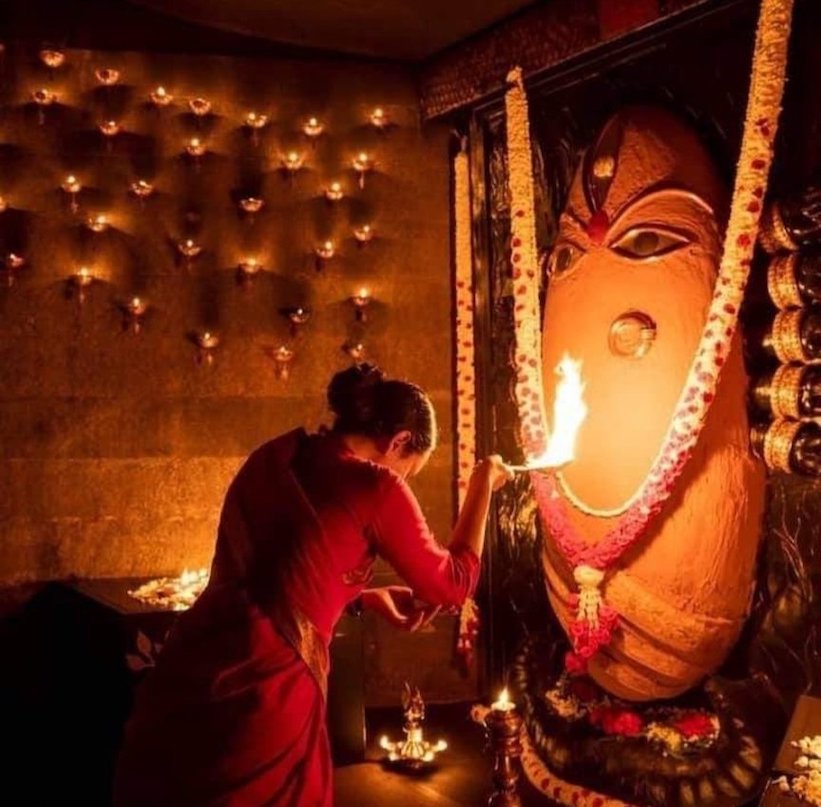Nestled in the serene embrace of the Velliangiri Mountains, the Maa Linga Bhairavi Temple stands as an emblem of change and empowerment. What truly sets this sacred place apart is its extraordinary tradition, where women priests, known as the “Bhairagini Maa,” are the sole guardians of the inner sanctum, performing rituals and offering devotion to the goddess. Draped in resplendent red sarees, these revered women priests hail from diverse backgrounds, transcending caste, creed, and nationality.
Unlike many temples in India, where menstruating women are often met with restrictions, the Maa Linga Bhairavi Temple, consecrated in 2010, is boldly challenging deeply rooted menstrual taboos. Here, female devotees are not just welcomed but actively encouraged to offer prayers and participate in temple rituals during their menstrual cycles, marking a significant departure from traditional norms.
Situated within the sacred grounds of Sadhguru Jaggi Vasudev’s ashram, approximately forty kilometers from Coimbatore in Tamil Nadu, the Maa Linga Bhairavi Temple boasts an architectural design that symbolizes the divine feminine. Its outer walls take the shape of an inverted triangle, representing the womb of creation, while an inner triangle symbolizes the masculine, unborn within the womb. This architectural symbolism resonates with the temple’s profound reverence for the Divine Feminine.
Menstruating Women Are Not Impure
Bhairagini Maa Hanine, a female priest originally from Lebanon, shared her insights exclusively with Times Now, shedding light on the temple’s revolutionary stance and the importance of dismantling outdated taboos.
She traced the historical roots of the practice that barred women from entering kitchens or temples during menstruation. The original intent was to provide women with respite from physically demanding daily chores. In a time when families were larger, and women were responsible for preparing meals for many, this practice recognized the physical and emotional changes that women experience during their monthly cycles. Over time, however, the original purpose became distorted, resulting in the widespread misconception of menstruation as a taboo.
Bhairagini Maa Hanine, a Christian by religion, moved to India from Lebanon at the age of 25 in search of inner peace. She passionately explained that menstruation is a vital biological process essential for the continuation of human existence. Labeling menstruation as a taboo, she argued, unjustly stigmatizes a fundamental aspect of human life.
The Linga Bhairavi Temple was consecrated by Sadhguru through the mystical process of prana pratishtha, harnessing life energies to transform stone into a deity. The goddess Linga Bhairavi is revered as the ultimate manifestation of the Divine Feminine, symbolizing power and inclusivity. She nurtures her devotees in all aspects of their well-being, be it physical, material, or, most importantly, spiritual.
Sadhguru once conveyed that those who earn the Grace of Bhairavi need not live in fear of life or death, poverty, or failure. All that humans consider as well-being can be attained if they earn the Grace of Bhairavi.
In a world that is progressively dismantling outdated customs and embracing equality, the Maa Linga Bhairavi Temple shines as a paragon of inclusivity and progress. It is a place where women are not only welcomed but celebrated during their menstrual cycles, challenging the stigma that has endured for generations. By reinterpreting tradition in a modern light, the temple is forging a path towards a more inclusive and progressive society. Here, menstruation is not viewed as impure, but as a natural and integral part of the human experience.


